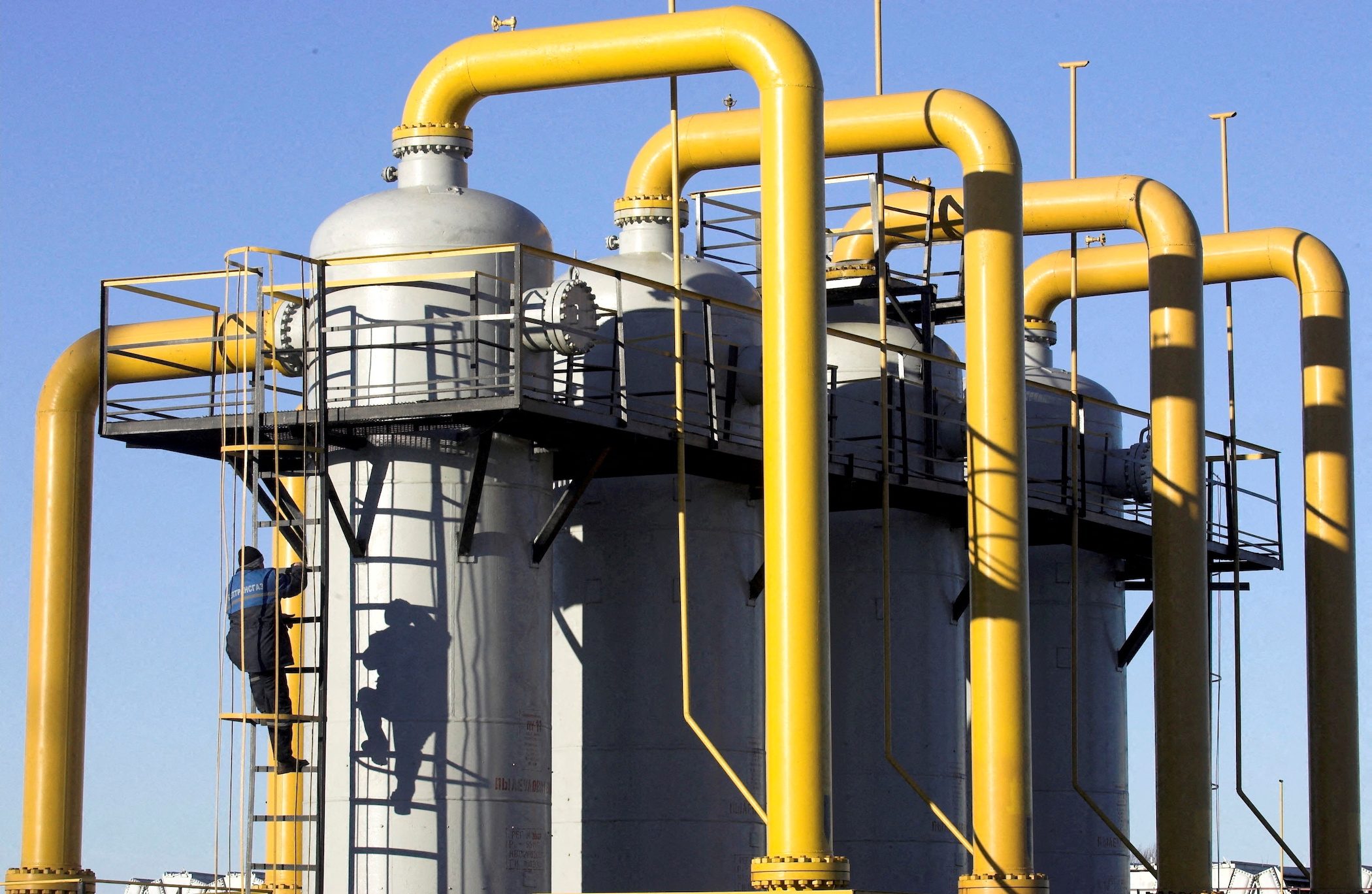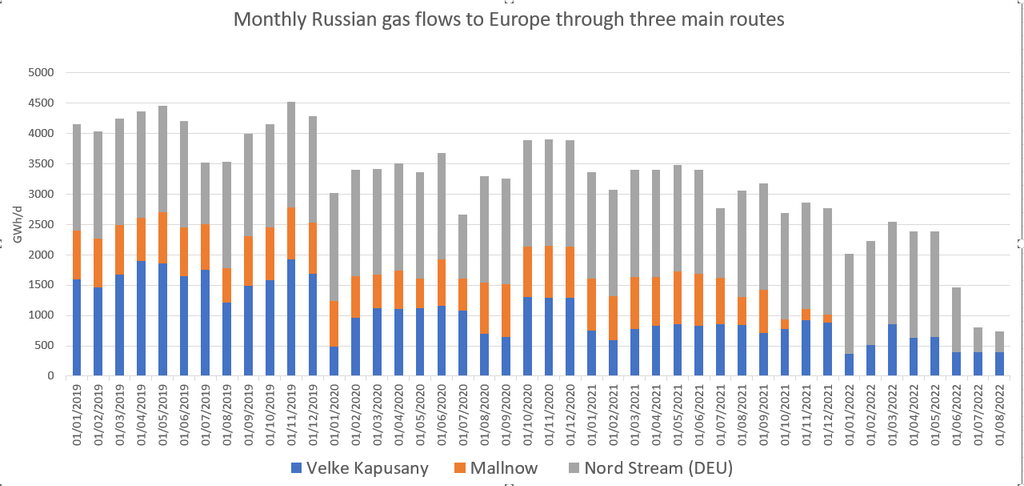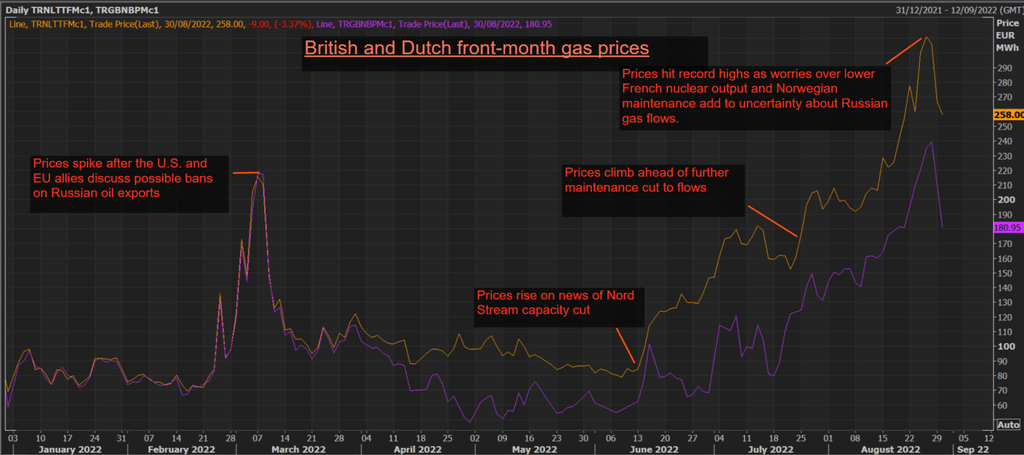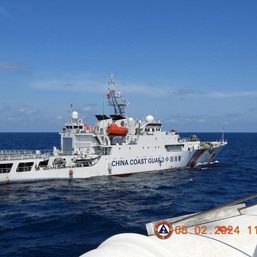SUMMARY
This is AI generated summarization, which may have errors. For context, always refer to the full article.

LONDON, United Kingdom – Russia on Friday, September 2, scrapped a Saturday, September 3, deadline to resume flows via the Nord Stream 1 pipeline to Europe, saying it had discovered a fault during maintenance, deepening Europe’s difficulties in securing fuel for winter.
The Nord Stream 1 pipeline which transports gas from Russia to Germany was undergoing maintenance from Wednesday, August 31, to Friday, cutting flows to zero and raising concerns about a prolonged halt to supply and further European gas price spikes.
Russia had already cut flows through Nord Stream to 20% of capacity.
Moscow says Western sanctions over the invasion of Ukraine are hindering equipment repairs, while Europe says this a pretext to reduce flows and use gas as a political weapon, an argument Russia rejects.
Below are some of the factors explaining the impact of Russian supplies on Europe’s gas markets, including those that do not rely on Russian gas directly.
How much gas does Russia supply?
Europe has historically relied on Russia for around 40% of its natural gas, most delivered through pipelines including Yamal, which crosses Belarus and Poland to Germany, Nord Stream 1, which runs directly to Germany, and pipelines through Ukraine.
A network of interconnecting pipelines links Europe’s internal gas markets.
Not all countries get gas directly from Russia, but if countries such as Germany, Europe’s top buyer of Russian gas, receive less, they must fill the gap from elsewhere, for instance from Norway, which has a knock-on effect on available gas for other countries.
As a result, changes in Russian supplies can cause as much gas price volatility in Britain as in the rest of Europe, even though Britain typically gets less than 4% of its gas from Russia. Lower Russian supply means less could be available from its largest supplier Norway.

What is happening now?
Russian gas flows to Europe have already fallen in the first seven months of 2022, with flows through the three main pipeline routes down around 40% compared with the same period in 2021.
Flows through Yamal, which historically transported gas from Russia to Europe, have been flowing eastwards, to Poland from Germany since the start of the year.
Flows through Nord Stream and via Ukraine, which were already down on last year, began falling in March after Russia’s invasion of Ukraine, an action Moscow called a “special military operation.”
This year, Moscow has cut gas flows to Bulgaria, Finland, Poland, Danish supplier Orsted, Dutch firm Gasterra, and Shell for its German contracts, after they all rejected a Kremlin demand to switch to payments in roubles.
Several companies such as Germany’s Uniper and RWE and Italy’s Eni made payments under Russia’s new scheme and continued to receive gas.
But many companies, including Uniper and RWE, have since seen their supply curbed with France’s Engie on Tuesday, August 30, becoming the latest company to be told by Gazprom it will receive less gas.
France accused Moscow on Tuesday of using energy supply as “a weapon of war.” Energy Transition Minister Agnes Pannier-Runacher told France Inter radio the country must prepare for the worst-case scenario of a complete halt of supplies of gas from Russia.
The cuts in gas flows through Nord Stream have driven up European and British gas prices, with prices rising to record highs last week ahead of the Wednesday-Friday maintenance.

What about the alternatives?
The European Union aims to end reliance on Russian fossil fuels by 2027 and has begun looking for alternatives, such as by increasing imports of global liquefied natural gas (LNG).
European imports of LNG rose by about 56% in the first half of 2022 compared with the same period in 2021, Refinitiv data showed, reflecting more capacity in the United States and high prices in Europe attracting more cargoes.
But Europe has limited capacity to receive LNG and supply concerns deepened after production was halted at a major US export plant owned by Freeport LNG following an explosion.
Freeport last week said it has delayed to late November from October the planned startup of the plant, which can export up to 15 million tonnes per annum (MTPA) and has been offline since June after a fire. Full operation is expected in March. – Rappler.com
Add a comment
How does this make you feel?















There are no comments yet. Add your comment to start the conversation.